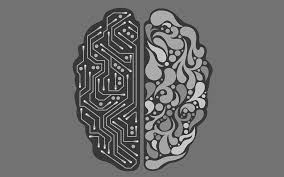Source: unite.ai
Researchers from Cornell University have created a computer algorithm inspired by the mammalian olfactory system. Scientists have long sought out explanations of how mammals learn and identify smells. The new algorithm provides insight into the workings of the brain, and applying it to a computer chip allows it to quickly and reliably learn patterns better than current machine learning models.
Thomas Cleland is a professor of psychology and senior author of the study titled “Rapid Learning and Robust Recall in a Neuromorphic Olfactory Circuit,” published in Nature Machine Intelligence on March 16.
“This is a result of over a decade of studying olfactory bulb circuitry in rodents and trying to figure out essentially how it works, with an eye towards things we know animals can do that our machines can’t,” Cleland said.
“We now know enough to make this work. We’ve built this computational model based on this circuitry, guided heavily by things we know about the biological systems’ connectivity and dynamics,” he continued. “Then we say, if this were so, this would work. And the interesting part is that it does work.”
Intel Computer Chip
Cleland was joined by co-author Nabil Imam, a researcher at Intel, and together they applied the algorithm to an Intel computer chip. The chip is called Loihi, and it is neuromorphic, which means it is inspired by the functions of the brain. The chip has digital circuits that mimic the way in which neurons learn and communicate.
The Loihi chip relies on parallel cores that communicate via discrete spikes, and each one of these spikes has an effect that can change depending on local activity. This requires different strategies for algorithm design than what is used in existing computer chips.
Through the use of neuromorphic computer chips, machines could work a thousand times faster than a computer’s central or graphics processing units at identifying patterns and carrying out certain tasks.
The Loihi research chip can also run certain algorithms while using around a thousand times less power than traditional methods. This is well-suited for the algorithm, which can accept input patterns from various different sensors, learn patterns quickly and sequentially, and identify each of the meaningful patterns even with strong sensory interference. The algorithm is capable of successfully identifying odors, and it can do so when the pattern is an astounding 80% different from the pattern originally learned by the computer.
“The pattern of the signal has been substantially destroyed,” Cleland said, “and yet the system is able to recover it.”
The Mammalian Brain
The brain of a mammal is able to identify and remember smells extremely well, and there can be thousands of olfactory receptors and complex neural networks working to analyze the patterns associated with odors. One of the things that mammals can do better than artificial intelligence systems is retain what they’ve learned, even after there is new knowledge. In deep learning approaches, the network must be presented with everything at once, since new information can affect or even destroy what the system previously learned.
“When you learn something, it permanently differentiates neurons,” Cleland said. “When you learn one odor, the interneurons are trained to respond to particular configurations, so you get that segregation at the level of interneurons. So on the machine side, we just enhance that and draw a firm line.”
Cleland spoke about how the team came up with new experimental approaches.
“When you start studying a biological process that becomes more intricate and complex than you can just simply intuit, you have to discipline your mind with a computer model,” he said. “You can’t fuzz your way through it. And that led us to a number of new experimental approaches and ideas that we wouldn’t have come up with just by eyeballing it.”
